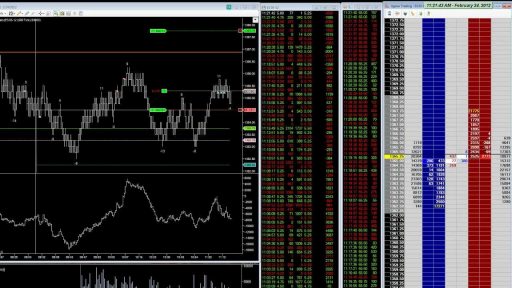- Home
- >
- Fundamental Analysis Education
- >
- Trade alongside the world’s biggest financial industries using the “Iceberg” orders system

Trade alongside the world's biggest financial industries using the "Iceberg" orders system

The Iceberg order is an order that has been split into a few smaller ones in order to cover its actual quantity.
When large market players have to buy and sell large quantities of a financial instrument, they can divide their orders into smaller parts so that the public does not see them at once - just like the "tip of the iceberg", the portion that is visible, covering the massive ice under the water. By hiding the size of the position, the iceberg orders reduce the impact on price movements.
To sell a large quantity of a currency, institutions need others to buy a lot of that currency at the same time. But how do they exactly do that? They force others to buy. and then seduce them. This must happen because the institution have to conceal its traces. If they don't, they will tip everyone off what they are going to do, and the market will react swiftly. It will cost them the good price. We can see them, they can not hide from us, so that means we can trade alongside them.
There are 3 basic disciplines that traders use to participate in the markets. There are unlimited number of trading strategies, but in reality there is a limited number of major disciplines that people use. And these are "breakout traders", "retracement traders" and "level traders". Typically, people have used all three, but focus on one of the at a time. In the first discipline, traders use a breakout at a key level as an entry signal, the second one is seeing a breakaway and a correction, and the third one is the level.
For this purpose, a historical technical analysis is used, by building resistances from the highs and supports from the bottoms.
When the price reaches these levels, say key resistance, as shown in the graph above we see how it rebounds from it several times. At the first rebound we have an engulfing bar. This is a sufficient price action signal for "level" traders for a short position and a stop above the shadows. The price is withdrawn from the levels, then comes for a new test. The resistance persists, new short positions are accumulated, and it goes down again. And so again and again the price goes up for a test, generates short positions and makes a little move down. However, with every short position, there are new stops above the resistance.
When you take a short position, when you close the order you buy. As you can see, after the fourth test, the resistance does not last and the price rises above it, with a closed engulfing bar above it. This bar takes all the stops from the short orders and generates buying in doing so - just what the institution needs to place its "short". The breakaway is enough for the "breakout" traders, and they take a long position with stop below the ex resistance new support. During the test of the support, "retracement" traders are waiting for a price action. As it is seen, the next couple of bars are doji, indicating for a long movement, generating new purchases and placing more stops below.
Then comes the time, when the institution releases the first part of its short position. As we explained earlier, they divide their orders so there are no big swings. The price makes a couple of bullish bars, and collapses with huge bearish bar, triggering all stops below. From here the price can continue declining, however the institution still has other parts of the order to place. To take advantage of the good levels it can get, the price holds its ground, creating signals for new short positions and new stops above. With the new move above, everything is ready, the institution has "forced" people to buy, triggering their stops from the short positions and the creating a price action signal for new long, generating even more purchases.
The short here is inevitable, the institution has placed its entire order in several parts and the movement continues straight down.
The basic rule for trading "Iceberg" orders is that at these key levels there must be two distinct bars away from the resistance, as seen at the beginning of the downward movement.
At these levels, it is now safe to open a short position with a stop above the highs, with the risk/reward ratio being at least 1/3.
Снимка: pixabay.com
 Trader Aleksandar Kumanov
Trader Aleksandar Kumanov Read more:
If you think, we can improve that section,
please comment. Your oppinion is imortant for us.













